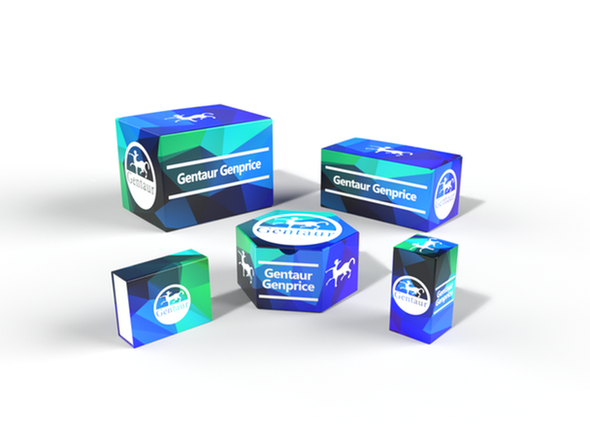749
Human Sequestosome-1 (SQSTM1) ELISA Kit | KTE60354
- SKU:
- 749-KTE60354
- Availability:
- Usually ships in 5 working days
Description
Human Sequestosome-1 (SQSTM1) ELISA Kit | KTE60354 | Gentaur UK, US & Europe Distribution
Application: This Human Sequestosome-1 (SQSTM1) ELISA Kit employs a two-site sandwich ELISA to quantitate SQSTM1 in samples. An antibody specific for SQSTM1 has been pre-coated onto a microplate. Standards and samples are pipetted into the wells and anySQSTM1 present is bound by the immobilized antibody. After removing any unbound substances, a biotin-conjugated antibody specific for SQSTM1 is added to the wells. After washing, Streptavidin conjugated Horseradish Peroxidase (HRP) is added to the wells. Following a wash to remove any unbound avidin-enzyme reagent, a substrate solution is added to the wells and color develops in proportion to the amount of SQSTM1 bound in the initial step. The color development is stopped and the intensity of the color is measured.
Detection Method: Colorimetric
Conjugate: N/A
Sample Type: Cell culture supernatants#Serum#Plasma#Other biological fluids
Assay Type: Multiple steps standard sandwich ELISA assay with a working time of 3-5 hours. It depends on the experience of the operation person.
Kit Component: • Human Sequestosome-1 microplate
• Human Sequestosome-1 standard
• Human Sequestosome-1 detect antibody
• Streptavidin-HRP
• Standard diluent
• Assay buffer
• HRP substrate
• Stop solution
• Wash buffer
• Plate covers
Features & Benefits: Human Sequestosome-1 (SQSTM1) ELISA Kit has high sensitivity and excellent specificity for detection of Human SQSTM1. No significant cross-reactivity or interference between Human SQSTM1 and analogues was observed.
Calibration Range: Please inquire
Limit Of Detection: Please inquire
Usage Note: • Do not mix components from different kit lots or use reagents beyond the kit expiration date.
• Allow all reagents to warm to room temperature for at least 30 minutes before opening.
• Pre-rinse the pipet tip with reagent, use fresh pipet tips for each sample, standard and reagent to avoid contamination.
• Unused wells must be kept desiccated at 4 °C in the sealed bag provided.
• Mix Thoroughly is very important for the result. It is recommended using low frequency oscillator or slight hand shaking every 10 minutes.
• It is recommended that all samples and standards be assayed in duplicate or triplicate.
Storage Instruction: The unopened kit should be stored at 2 - 8°C. After opening, please store refer to protocols.
Shipping: Gel pack with blue ice.
Precaution The product listed herein is for research use only and is not intended for use in human or clinical diagnosis. Suggested applications of our products are not recommendations to use our products in violation of any patent or as a license. We cannot be responsible for patent infringements or other violations that may occur with the use of this product.
Background: The Src homology type 2 (SH2) domain is a highly conserved motif of about 100 amino acids which mediates protein-protein interactions by binding to phosphotyrosine. p56-lck, a T-cell-specific src family tyrosine kinase with an SH2 domain, is involved in T-cell signal transduction. A 62-kD protein (Phosphotyrosine-independent ligand for the Lck SH2 domain of 62 kDa) was identified by Park et al. (1995) as a ligand of the p56-lck SH2 domain. Gong et al. (1999) screened a yeast 2-hybrid library made from rat hippocampal mRNA against full-length Kv-beta-2 . Two previously unknown interacting proteins were identified, one of which was identical to Zip (PKC-zeta) -interacting protein), the rat homolog of p62. Zip1 and Zip2, which arise from alternative splicing, are identical except for 27 residues missing from Zip2.
Alternative Names: SQSTM1; A170; OSIL; PDB3; ZIP3; p60; p62; p62B; EBI3-associated protein p60; oxidative stress induced like; phosphotyrosine independent ligand for the Lck SH2 domain p62; ubiquitin-binding protein p62
Search name: SQSTM1; A170; OSIL; PDB3; ZIP3; p60; p62; p62B; EBI3-associated protein p60; oxidative stress induced like; phosphotyrosine independent ligand for the Lck SH2 domain p62; ubiquitin-binding protein p62
Tag: SQSTM1






